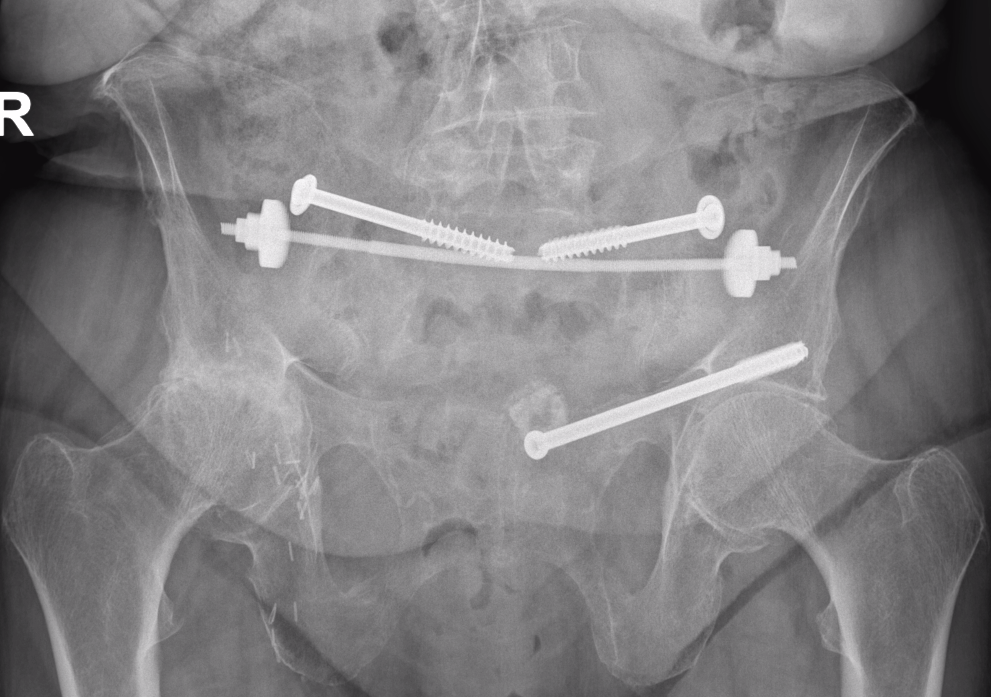Appointments
-
Call +32 16 34 48 50
- Mondays to Thursdays from 08:00 to 18:00
- Fridays from 08:00 to 17:00
Symptoms
A fractured pelvic ring usually causes pain at the level of the buttocks and groin. Movements at the level of the hip are very painful and usually not possible.
Treatment
Treatment of a fractured pelvic ring depends on the type of trauma, the pain experienced and whether or not the fracture is displaced.
Fractured pelvic ring due to low-energy trauma
A fracture of the pelvic ring due to low-energy trauma (fragility fracture of the pelvis) occurs mainly in the elderly.
Maintaining mobility and self-reliance is aimed at getting you back to walking as soon as possible.
It usually involves a fracture of the sacrum and pubic bone that is little displaced. You will perform exercises with the physiotherapist. An assessment is made as to whether the fracture is sufficiently stable to maintain a non-operative policy. This succeeds in ±70% of cases.
In ± 30% of cases, the fracture has nevertheless moved too violently or the pain symptoms are too severe to maintain a non-operative policy. A minimally invasive screw osteosynthesis (incision of up to 3 cm) is then performed, after which your pain symptoms should decrease and you may can walk better.

Standard radiograph of the pelvis after screw osteosynthesis.
Aftercare
- We aim for rapid mobilisation with gait rehabilitation involving full support and muscle training practised under the guidance of the physiotherapist. Together, we aim to maximise your self-reliance.
- Together with our social service, we look at whether returning home is feasible or whether an interim solution must be found (short stay, rehabilitation centre, etc.).
Broken pelvic ring due to high-energy trauma
A fracture of the pelvic ring due to high-energy trauma occurs mainly in the young adult population and may be associated with severe life-threatening injuries and neurological damage (Cfr. polytrauma).
There are often associated fractures (spinal, lower limb, upper limb, etc.).
Surgery
Usually surgery is performed in 2 phases.
- The first phase involves the stabilisation of vital organ functions and external fixation of the pelvis
- The second phase involves the reconstruction of the pelvic ring through a combination of open and minimally invasive techniques.
The aim is to reconstruct the pelvic ring and ligamentous structures (ligaments).
Aftercare
After surgery, usually no full load is allowed for 6 weeks. However, you can practise mobility and muscle maintenance with the physiotherapist.
After 6 weeks, you may initiate intensive gait rehabilitation and muscle training.
Prognosis, risks and complications
Specialists



